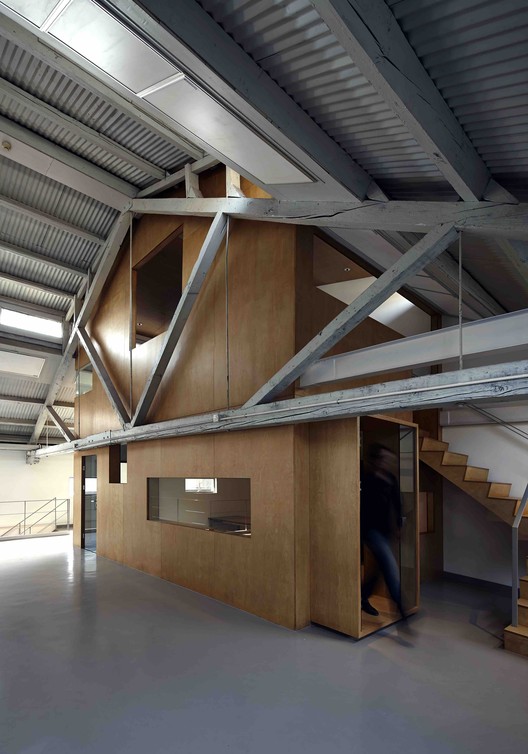
-
Architects: META Studio
- Area: 400 m²
- Year: 2014
-
Photographs:Chun Fang

Text description provided by the architects. The Arrow Factory Hutong Media & Culture Creative Space is symbolically right next to the wall of the Imperial Academy heritage. The site is one the so called “arrow factory”- old warehouses with immense space inside, and the ground floor has already been devided and enclosed as a “Siheyuan” type courtyard, due to the previous hutong re-development. This project is a regeneration-by-intervention, starting from the existing spatial framework, yet aiming at transforming it from a vast empty warehouse to a space that filled with unleashed vitality, for crowds of people from creative cultural industry to gather around and communicate. It will not only offer diverse programs such as: meeting, screening, library, bar, entertainment, co-working…but also become a“collaborative commune”of those who are interested in the innovation of media and culture.


























